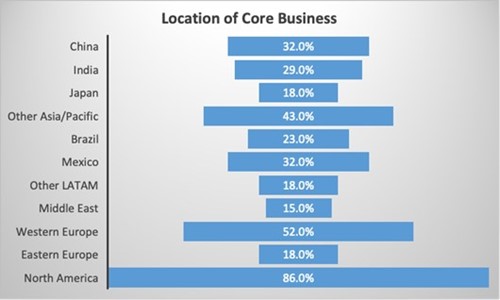Supply Risk Assessments, Governance and Mitigation Study
By:
Hitendra Chaturvedi
Professor of Practice
Department of Supply Chain Management
W.P. Carey School of Business
Arizona State University
The role of supplier governance and risk mitigation has changed dramatically due to factors including the pandemic, climate change, international conflicts, and many more that had the potential to change the landscape of an entire industry in a matter of months. Historically, supply management risk assessment included feedback from purchasing managers and through a few surveys to gather data about the risks in the ecosystem and create a mitigation plan. Still, the risks in the supply base are evolving too fast, and an annual, biannual, or even a quarterly supplier risk assessment and governance/mitigation exercise is just too late
Time to Look at Supplier Risk Assessment, Governance & Mitigation Planning
Furthermore, companies need help with effective risk management execution because historically, supplier risk assessment and mitigation planning were ad-hoc, and extremely tactical exercises. It is time that we looked at supplier risk assessment, governance, and mitigation planning not as a static exercise but as a strategic, dynamic, and evolving phenomenon that deserves a place on the CEO’s dashboard, very well encapsulated by one of the interview comments.
“The supply chain is shifting its responsibilities to identify risks far beyond our 3rd party providers. We are spending more time looking at changing trends, including global issues, trade tensions, local labor constraints, including labor agreements, and the effects of government bills and regulations.”
12 Risks Within the Supplier Ecosystem
A comprehensive study was conducted through interviews, focus groups, surveys, and industry research to understand supply management’s current and future (3 years out) risks and the effectiveness of risk mitigation plans. The research study participants spanned manufacturing and service sectors across 17 industries. The participating companies had core business operations across countries and continents, as indicated by the chart below.

This wide reach of the study gave a very comprehensive view. After numerous discussions and conversations, 12 risks emerged across the supplier ecosystem with varying degrees of importance from high to low severity. Cyber Security & Data, Transport & Logistics, Labor & Hiring, Spare Parts & Raw Material, Pandemic, Financial & Working Capital, Compliance & Regulatory, Supplier Redundancy, Political Instability, Sustainability & ESG, Climate Change, and Onshoring & Near Sourcing.
To access the full research report, Supply Risk Assessments, Governance and Mitigation Study click here.
CAPS is a B2B nonprofit research center serving supply management leaders at Fortune 1000 companies. CAPS Research inspires leaders with profound discovery and executable strategies to shape the future of supply management. Research reveals the destination, benchmarking charts the course, and networking creates the path to transformation. All CAPS offerings are sales-free, bias-free, and practitioner-driven. CAPS was established in 1986 at the W. P. Carey School of Business at Arizona State University in partnership with the Institute for Supply Management. Learn more at www.CAPSResearch.org.
Non-members can receive the report of each survey they submit.
Members can access all reports, but are encouraged to submit surveys to
increase the comparative breakouts only they receive.